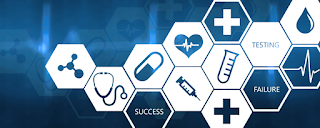Jet injector device is a medical device that uses a needle-free injection system. The injector delivers drugs, vaccines, compounds, anesthetics, steroids, or insulin in a very fine stream of fluid by high-pressure precision. The high pressure is produced either by using nitrogen-filled or carbon-dioxide-filled cartridge or a spring. The medication is forced through a tiny opening in the device, which allows the drug to penetrate the skin and is administered into the underlying tissue either intramuscularly, subcutaneously, or intradermal.
The jet injector device provides (with minimal training) reproducible, reliable, and accurate delivery of medication, eliminates the need for "sharps" disposal, reduces risks such as cross-contamination and needle stick injuries, enhances compliance, and is less painful for the patient. These attributes are expected to drive the global Jet Injector Device Market. Increased inclination toward minimal invasive methods can further boost the demand for jet injectors. Improved patient convenience due to ease in professional and self-medication uses can drive the growth of the market during the forecast period. According to the International Diabetes Federation, the rate of diagnosis of diabetes has increased from 30 million people to 246 million people in India, China, and the U.S., over the last decades. Increasing incidence of diabetes drives the jet injector devices market. However, some formulations of vaccines and medications produce a stinging or burning sensation, whether it is administered using a jet injector or a needle.
Request to View Brochure of Report -
The global jet injector device market can be segmented based onproduct type, methods of injection, end-user, medication type, and region. In terms of product type, the market can be classified into powder jet injections, liquid jet injections, and depot or projectile jet injections. Based on the methods of injection, the market can be classified into gas powdered jet injector, spring load jet injector, and battery powdered jet injector. In terms of end-user, the market can be categorized into podiatric clinics, dental clinics, veterinary clinics, ambulatory surgical centers, and hospitals. In terms of the medication type, the global jet injector device market can be divided into vaccines, drugs, aesthetics, hormones, genes, and others.
Geographically, the global jet injector device market can be classified into Asia Pacific, North America, Latin America, Europe, and Middle East & Africa. North America held a dominant market share in the year 2016, owing to technological advancements in research & development, high awareness, and early adoption of jet injector devices. Europe held the second largest market share in 2016 due to government initiatives to promote good health in the region. Asia Pacific market is expected to expand during the forecast period. The growth can be accredited to increasing life expectancy in the region. According to World Health Organization (WHO), life expectancy continues to rise in the South East Asia region. Since 2000, life expectancy has increased at nearly 3.5 years per decade. The life expectancy in the region was 69.0 in 2015. The global jet injector device market in Africa is anticipated to grow during the forecast period owing to the increasing prevalence of diabetes. According to WHO, by 2030, the estimated number of diabetes cases will reach nearly 23.9 million in Africa. In surveys carried out by WHO, approximately 15% of adults between the ages of 25 and64 suffer from diabetes.
Key players of the global jet injector device market are PharmaJet, MK Global Co., Spirit Healthcare Ltd, Valeritas, Inc, Lundbeck Limited, Crossject needle-free injection systems, InjexUK, and Antares Pharma.

Comments
Post a Comment